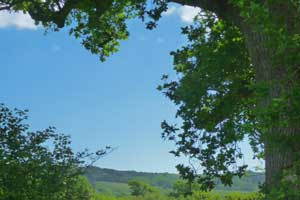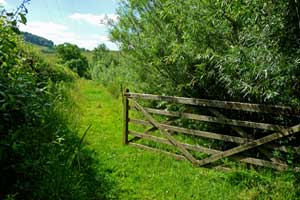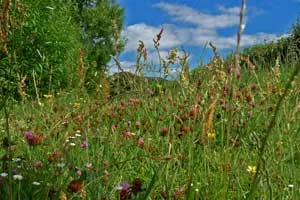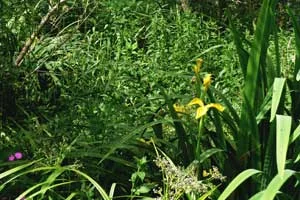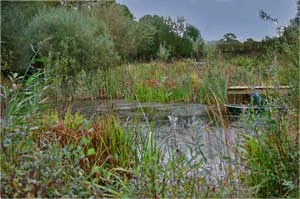Willow System
In 1997 when assessing how to be ecologically sensitive with our waste, which it is easy to be unconscious about, we were clear, a prime goal was to not have any of it end up in the sea, which in conventional treatment systems most of the minerals, trace elements and a lot of organic molecules usually do, which is considerably polluting. Chris, with his background in biochemistry and water pollution control, believed that ultimately we need to use some type of earth closet, but also recognises that many people would just not cope with that. We discovered that the cleanest water would come from a wetland treatment system this is a series of ponds with reeds and earth banks planted with willow.
The beauty of this system is twofold, it does not discharge into the local river and captures most of the pollutants which in various ways go back to the land, via the willow, as nutrient. Also it has become a haven for amphibians, insects and nesting sites for warblers and long tailed tits. There were fish but the heron enjoyed them all! We use the willow for kindling and local artists freely harvest it for living sculpture and mazes for schools and charity events.
The grey water from the septic tanks filters through the ponds and beds of willow and cleans it to natural pond quality. It has zero energy use, as there are no pumps, or mechanical emptying, although it needs human energy to initially plant, set it up and harvest it.
The top pond has the most polluted water entering it, it is covered with straw and initially only had eight reeds planted in it, now the reed mat is dense enough to take the weight of an occasional stray cow! Many different species of reed, iris, coltsfoot, water buttercup, and marsh plants(to name a few) were planted and have flourished.
The water becoming cleaner alll the time, flows through all the willowbeds, (the system needs to be planted on a slope), smell free and cleaned by bacteria protozoans and fungi around the roots and in the soil. Most of the willow is high biomass, fast growing species useful for hurdles, kindling or composted to return minerals to the soil.


